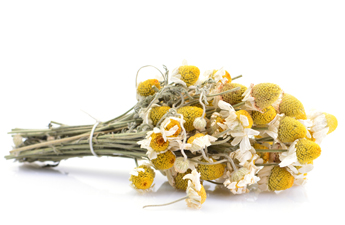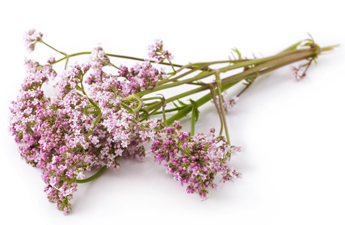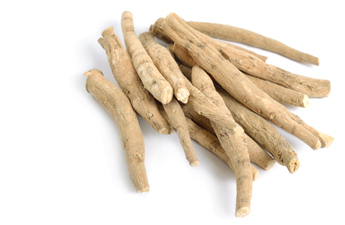Saffron: The Sunshine Herb
By Tamara Welsh, Happy Herbalist

You may have heard of Saffron (Crocus sativus). If so, you’ll likely recognise it as an expensive little stringy fibre, called saffron ‘threads’, that comes in tiny jars, sold as a spice to add colour and flavour to cooking. These threads are actually the stigma (reproductive element) of the saffron flower. They are a bright orangey-yellow due to a high concentration of carotenoids (1). In fact, the name ‘Saffron’ is derived from the Arab word for yellow (1).
You may have wondered why saffron is so expensive. Harvesting the stigma is done meticulously by hand in order to preserve the constituents (plant chemicals) found in them. It is estimated it takes approximately 75,000 saffron blossoms to produce just one pound (454grams) of saffron (1). This gives you a sense as to why saffron is considered the most expensive spice in the world.
Saffron has a sweet, floral and earthy flavour and while it is famous as a spice, it has also been used medicinally by many cultures including ancient Greece, the Middle East, China and Europe (1,2). Interestingly, many of the effects of saffron described in ancient texts has now been tested and confirmed by modern science. Modern herbalists are using saffron for its antidepressant, cognition enhancing, antioxidant and neuroprotective qualities.

Saffron for low mood and depression
The scientific evidence of the use of saffron for depression has been growing over the past 20 years. A lot of the literature comes from Iran, where approximately 90% of the world’s saffron is cultivated (3). The evidence for using saffron for depression is strong and it has been shown to be effective in relieving symptoms of mild and moderate depression (4-6). Furthermore, when compared to fluoxetine (sold under the brand names Prosac and Sarafem), saffron was found to be as effective with no difference in side effects between the two (7-9). The main mechanisms of action for this effect are thought to include increased re-uptake inhibition of monoamines (dopamine, norepinephrine, serotonin), NMDA receptor antagonism, and GABA-α agonism (5,10). Saffron has also been studied for its ability to improve symptoms of Premenstrual Syndrome with positive outcomes (11).
Saffron to enhance cognition and protect the brain & eyes
Saffron is often referred to as a nootropic. This is a term used to describe a drug that is used to enhance cognition and memory. For this reason, saffron has gained interest as a potential supplement to drug therapy for neurodegenerative conditions such as Alzheimer’s Disease, Parkinsons and Dementia. The antioxidant crocin, which is the primary colouring pigment in saffron, has multifunctional protective activities in the brain (12). Due to the high concentration of carotenoids, saffron is also being investigated for its role in improving age-related macular degeneration (13-16). More research is needed in this area to understand the mechanisms and effectiveness of saffron on neuroprotection and cognition but current preliminary studies are promising.
We have a Saffron Spagyric available both instore and online!
Saffron safety
As with any herb or drug it is important to understand the dosage guidelines when using saffron. Saffron has been used as a spice and food for centuries and is well tolerated. Many studies use a therapeutic dose of 30mg of saffron extract or around 90-180mg equivalent dry stigma per day and this is considered safe (17). Considering the chemical profile of saffron and its antidepressant qualities, using the herb alongside antidepressant, sedative and hypertensive medications should be carefully supervised. Always proceed with caution when taking therapeutic doses of herbal medicines alongside any medication. High doses of saffron are cautioned in pregnancy and lactation as studies confirming its safety are limited.
References
- Braun L. Cohen M. Herbs & Natural Supplements – An evidence-based guide. 4th Edition, Volume 2, Churchill Livingstone, Sydney, 2015, pp.865-870
- Bagur MJ, Alonso Salinas GL, Jiménez-Monreal AM, Chaouqi S, Llorens S, Martínez-Tomé M et al. Saffron: An Old Medicinal Plant and a Potential Novel Functional Food. Molecules. (2017) Dec 23;23(1):30.
- Leone S, Recinella L, Chiavaroli A, Orlando G, Ferrante C, Leporini L, Brunetti L, Menghini L et al. Phytotherapic use of the Crocus sativus L. (Saffron) and its potential applications: A brief overview. Phytotherapy Research. (2018) 32:2364–2375.
- Tóth B, Hegyi P, Lantos T, Szakács Z, Kerémi B, Varga G, Tenk J, Pétervári E, Balaskó M, Rumbus Z, Rakonczay Z, Bálint ER, Kiss T, Csupor D. The Efficacy of Saffron in the Treatment of Mild to Moderate Depression: A Meta-analysis. Planta Med. (2019) Jan 85(1):24-31.
- Sarris J et al. Herbal medicine for depression, anxiety and insomnia: a review of psychopharmacology and clinical evidence. Eur Neuropsychopharmacol. (2011) Dec;21(12):841-60
- Hausenblas HA et al. Saffron (Crocus sativus L.) and major depressive disorder: a meta-analysis of randomized clinical trials. J Integr Med. (2013) Nov;11(6):377- 83
- Shahmansouri N et al. A randomized, double-blind, clinical trial comparing the efficacy and safety of Crocus sativus L. with fluoxetine for improving mild to moderate depression in post percutaneous coronary intervention patients. J Affect Disord 155 (2014):216-222
- Akhondzadeh BA et al. Comparison of peta lof Crocus sativus L. and fluoxetine in the treatment of depressed outpatients: a pilor double-blind randomized trial. Prog Neuropsychopharmacol Biol Psychiartry 31.2 (2007):439-422
- Noorbala AA et al. Hydro-alcoholic extract of Crocus sativus L. verses fluoxetine in the treatment of mild to moderate depression: a double-blind, randomized pilot trial. J Ethnopharmacol 97.2 (2005):281-284
- Sarris J. Herbal medicines in the treatment of psychiatric disorders: 10-year updated review. Phytotherapy Research. (2018):1–16
- Anha-Hosseini M et al. Crocus sativus L. (saffron) in the treatment of premenstrual syndrome: a double-blind, randomised and placebo controlled trial. BJPG 115.4 (2008): 515-519
- Finley JW, Gao S. A Perspective on Crocus sativus L. (Saffron) Constituent Crocin: A Potent Water-Soluble Antioxidant and Potential Therapy for Alzheimer’s Disease. J Agric Food Chem. (2017) Feb 8;65(5):1005-1020
- Broadhead GK, Grigg JR, McCluskey P, Hong T, Schlub TE, Chang AA. Saffron therapy for the treatment of mild/moderate age-related macular degeneration: a randomised clinical trial. Graefes Arch Clin Exp Ophthalmol. 2019 Jan;257(1):31-40.
- Piccardi M, Fadda A, Martelli F, Marangoni D, Magli A, Minnella AM et al. Antioxidant Saffron and Central Retinal Function in ABCA4-Related Stargardt Macular Dystrophy. Nutrients. 2019 Oct 15;11(10):2461.
- Falsini B, Piccardi M, Minnella A, Savastano C, Capoluongo E, Fadda A et al. Influence of saffron supplementation on retinal flicker sensitivity in early age-related macular degeneration. Invest Ophthalmol Vis Sci. 2010 Dec;51(12):6118-24.
- Heitmar R, Brown J, Kyrou I. Saffron (Crocus sativus L.) in Ocular Diseases: A Narrative Review of the Existing Evidence from Clinical Studies. Nutrients. 2019 Mar; 11(3): 649.
- Bostan HB, Mehri S, Hosseinzadeh H. Toxicology effects of saffron and its constituents: a review. Iran J Basic Med Sci. 2017 Feb;20(2):110-121.
Also by The Happy Herbalist
Discover the JOY of DAMIANA: Our favourite Happy Herb!

Herbs for LUNG SUPPORT
Responsive Editing
Maximize your control and create intricate responsive layouts with the ability to control settings uniquely per each device viewport.

Global Sections
The easy way to manage a section that you place on multiple pages of your site. Edits made in one location will instantly reflect in all instances where the section is used.






 Nextwave
Nextwave

